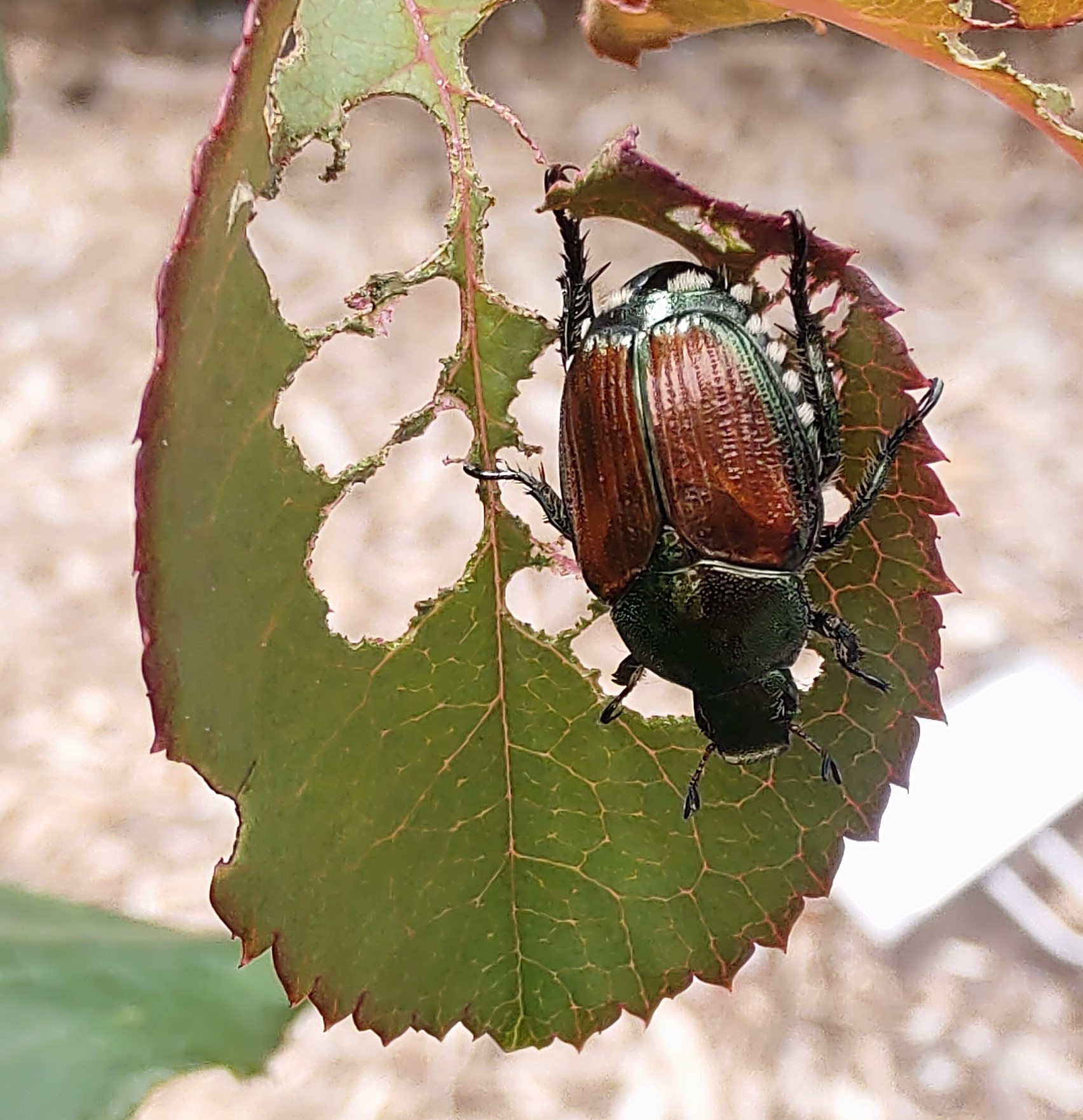Japanese Beetles - Destructive Pest in the Garden
Return to Insect Agent Articles

With enough warm summer days upon us, many gardeners in the area are beginning to sing their woes regarding the dreaded Japaese beetle. Generally numerous, these metallic green and brown insects are known to feed on over 300 species of plants, including roses, ornamental trees, flower beds, orchards, vineyards, and vegetable gardens. When they’re done feeding, not much is left of your plant's foliage aside from the skeletonized remains of former leaves. What’s more, the control of them is tedious and often sporadically successful. So, what do we know about these insects? What can be done to control them successfully?
Japanese Beetles were first introduced to the United States at the 1916 World’s Fair in New Jersey. In short, they made their way onto incoming freight. Since then, the pests have progressively expanded to every state east and west of the Mississippi in non-arid locales capable of sustaining them. Though they are only alive in their beetle form for about six weeks in the summer, they have a year-long lifecycle, including several pupil stages as grubs in the soil. Their summer emergence is the height of concern with them, as this is when they become truly damaging to plants.

The best current method for mitigating Japanese beetles is still the old standby of manual hand removal, which involves dropping the pests into soapy water. Though tedious, this is most effective at eradicating the current pest from a plant without damaging other insects that may be present. The known chemical active ingredients that can be used to treat Japanese beetles are cyfluthrin, bifenthrin, and cyhalothrin. However, these ingredients are also known to be detrimental to the pollinators and beneficial insects you want (and need) in your gardens to be productive.
Though not foolproof by any means, the best method to apply these and avoid your beneficial insects and pollinators is to apply early in the morning or later in the evening, when the insects are resting and not flying around. The products then require re-application every 2-3 weeks to be effective. Elsewhere, neem products and pyola oil have also been effective at deterring Japanese Beetles, with the caveat that they only offer significantly shortened 3 to 4 days of protection before needing reapplication.
Many may have heard of Japanese Beetle traps and may be interested in incorporating them into their gardens. Unfortunately, this practice should be avoided unless your garden is in a wide-open space instead of a typical yard. The purpose of these traps is to draw in beetles using pheromones. The traps are very effective and will cause a full-blown infestation if not located correctly in an area large enough to accommodate this added influx of pests. If used, the traps should be placed far away from the gardens or plant specimens you are trying to protect. However, placing traps and reapplication of chemicals may be just as tedious as hand-picking, making the latter the most effective and desirable control.
by Anthony Reardon, Johnson County Extension, 2024
Learn more on Japanese beetles with this resource from K-State Research and Extension.
Still have questions? The Garden Hotline is staffed by trained EMG volunteers and Extension staff who will assist you with questions.
Phone: (913) 715-7050
Email: garden.help@jocogov.org